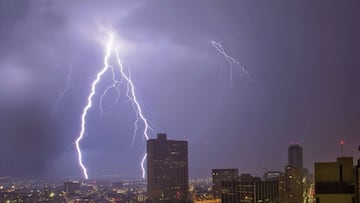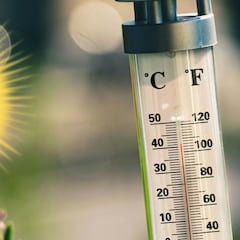Cold front in Texas: When will it enter, temperatures and areas affected by the rain
Just days after temperatures reach three figures a new cold front threatens to bring severe storms and hail in Texas.

Just days after being hit by an intense heat wave Texas residents could soon see the mercury plunge. The National Weather Service (NWS) has warned of an incoming cold front that could bring bursts of unseasonably cold weather to the Lone Star State.
The NWS report claims that there is a high chance of strong to severe thunderstorms and hailstorms over the next few days, threatening any summer plans in the immediate future.
What areas will be affected by the cold front in Texas?
According to projections the temperature will begin to drop on the evening of Sunday, 9 June and things will feel noticeably colder at the start of the new week. Residents in the north of the state are expected to be the worst-affected by the storms, with cities Amarillo, Lubbock and Electra named as likely areas.
Chances for showers and thunderstorms return late this afternoon and evening as a weak cold front approaches North Texas. This front will bring slightly higher chances for thunderstorms to the area heading into the workweek. #dfwwx #ctxwx pic.twitter.com/JiLdp8vOxG
— NWS Fort Worth (@NWSFortWorth) June 9, 2024
A statement from NWS on Sunday has warned: “Chances for showers and thunderstorms return late this afternoon and evening as a weak cold front approaches North Texas. This front will bring slightly higher chances for thunderstorms to the area heading into the workweek.”
What are the temperatures in Texas this week?
After recording temperatures above three figures, the upcoming cold front will at least give North Texans some respite from the heat. According to weather projections, lows of between 71º and 75º F are expected throughout the week.
Related stories
According to the NWS report low temperatures and rain could last from Monday 10 June until Saturday 15 June. Outside the north of the state, the central region and south will continue to experience triple-digit temperatures throughout the week.
So why are the temperatures dropping so low? It’s all the fault of Super Typhoon Nuri in parts of Alaska’s Aleutian Islands. Cold winds from Nuri are being carried further south by a process known as ‘bombogenesis’ as the central pressure in the system drops dramatically. This brings a burst of arctic air further south and is responsible for next week’s chilly conditions.



Complete your personal details to comment